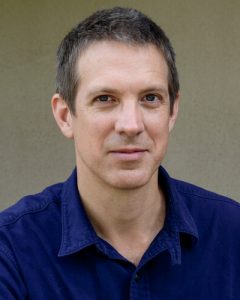Bird lovers, migration studies fans and poetry buffs should consider joining us this Saturday, April 10, for Bird is the Word: Books about Winged Wonders.
The FREE panel discussion will take place online, one of 114 that comprise the 2021 San Antonio Book Festival. It will explore the grossly misunderstood caracara, the nature and magic of migrations, and poetry and politics inspired by birds.
I’ll be moderating the discussion, which includes a diverse and distinguished panel. Here’s some quick info about the authors and their books:
A World on the Wing: the Global Odyssey of Migratory Birds, by Scott Weidensaul


Scott Weidensaul and a snowy owl. Courtesy photo
Weidensaul, a renown nature writer from Pennsylvania with more than 30 books and a Pulitzer Prize nomination to his credit, tackles the science and magic of global bird migration. Through elegant prose, riveting anecdotes and scientific questions posed in language any of us can understand, he explores WHY migratory birds are vanishing.
The question resonates with those who follow the monarch butterfly migration.
Christian Cooper in the New York Times labeled Weidensaul’s latest work “a gripping journey alongside the world’s feathered wanderers and the people who study them.” The Guardian of London called Weidensaul “a master storyteller who is also profoundly involved in scientific ornithology.”
A Most Remarkable Creature, by Jonathan Meiburg

Jonathan Meiburg / Photo by Jenna Moore

Meiburg, best known as the leader of an Austin indie rock band called Shearwater, snagged a fellowship in 1997 to travel near and far. The opportunity afforded him a year-long journey to remote communities that sparked an enduring fascination with islands, birds, and the deep history of the living world.
Along the way, he fell in love with the caracara, a bird of prey in the falcon family. Labeled “Johnny rooks” by birders in the Falkland Islands, the caracara is famously mischievous, intelligent, trainable and frisky–a bird that rarely gets the the respect it deserves.
Meiburg makes a compelling case for embracing this hemispheric raptor, which scavenges dead animals and attacks and eats live prey in equal measure. The caracara is also known to steal hats, play games and distinguish toys and colors.
Meiburg also taps into natural history with context provided by Charles Darwin and Henry Hudson, both of whom encountered the caracara in their nature travels.
Sparrow Envy: Field Guide to Birds and Lesser Beasts, by J. Drew Lanham


J. Drew Lanham
In this graceful volume of poetry and prose, birder, naturalist, hunter-conservationist, and Alumni Distinguished Professor of Wildlife Ecology at Clemson University J. Drew Lanham paints an irreverent and sometimes political portrait of the bird world.
The self described black birder explores “survival” and “thrival” and posits that his community of black birders has much in common with endangered birds: they’re both rare because their habitat is threatened.
In his poem, “Octoroon Warbler,” Lanham proposes we reevaluate many bird names and “remember the identity of the birds for what they are” rather than the white men who “discovered” them.
The Lewis woodpecker, a distinctive North American woodpecker named after Meriwether Lewis of Lewis and Clarke fame, should be recast as the Sacagawea’s Woodpecker, he declares.
Why, he wonders, should birds be named after men with “the self-serving penchant for naming things after themselves”?
Great question.
For some perspective on how Lanham weaves truth with humor and politics, check out his well-watched YouTube video below. In it, he details the rules for Black Birdwatchers, ie, “Never wear a hoody. Ever.”
Please join us for this lively discussion by registering for HERE. After signing in, click on “Schedule” and search for Bird is the Word. And make sure to check out the other FREE discussions offered by the San Antonio Book Festival.
NOTE: If you’d like to buy the books and support Nowhere Bookshop, an independent bookstore in San Antonio, click on the links below to purchase the books by the authors above. Proceeds benefit the Festival.
- A World on the Wing: the Global Odyssey of Migratory Birds, by Scott Weidensaul
- A Most Remarkable Creature, by Jonathan Meiburg
- Sparrow Envy: Field Guide to Birds and Lesser Beasts, by J. Drew Lanham
Top photo: Crested caracara by Andreas Trepte, www.avi-fauna.info
Related posts:
- Monarch butterflies arrive in Texas to freeze stunted milkweeds and nectar plants
- Reduced monarch butterfly population heads north from Mexico in wake of historic Texas freeze
- Tropical milkweed impact on monarch migrations “grossly overated,” says longtime monarch scientist
- Milkweed Shortage Sparks “Alternative Fuels” for Monarch Butterfly Host Plant
- It Takes a Village to Feed Hungry Monarch Caterpillars
- Desperately Seeking Milkweed: Milkweed Shortage Creates Butterfly Emergency
- Pollinator Power on the San Antonio River Walk
- 2014 Monarch Butterfly Migration: Worst Year in History or Hopeful Rebound?
- How to Raise Monarch Butterflies at Home, Part One
Like what you’re reading? Follow butterfly and native plant news at the Texas Butterfly Ranch. Sign up for email delivery, like us on Facebook, or follow us on Twitter, @monikam.


Leave A Comment